Last night, I had the privilege of giving an author talk at one of Cleveland’s most iconic watering holes—Happy Dog on Detroit Avenue. Sure, I’ve spoken in historic buildings, libraries, and community halls—but few places have this much history, personality, and mustard on the tables.
As I shared stories from my book, I realized something: this place doesn’t just serve hot dogs and host indie bands—it’s a living, breathing time capsule of Cleveland’s tavern culture. And like many great Cleveland bars, its past is full of wild tales, legal battles, colorful characters, and a few things you honestly wouldn’t believe if they weren’t backed up by court records.
So, in case you missed the talk (or just want the deep dive), here’s a closer look at the long, strange, and wonderfully Cleveland journey of 5801 Detroit Avenue.
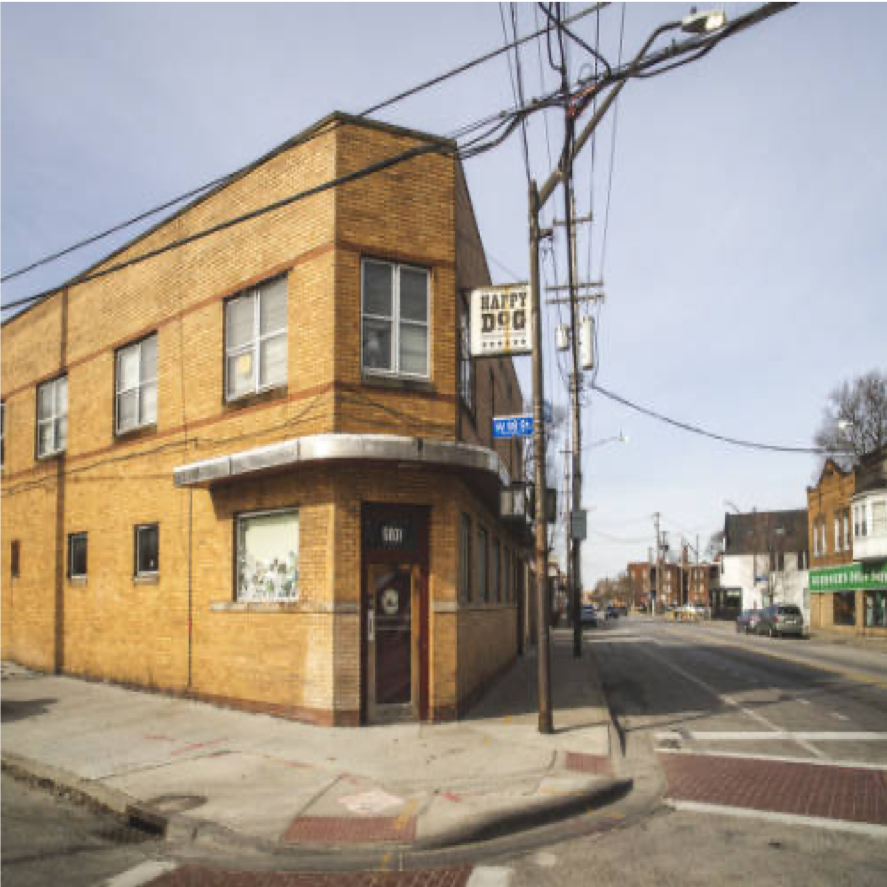
Wieners, Rye Bread, and the Long Arm of the Law (1909–1920s)
The earliest reference to the property came in 1909—a classified ad looking for a “Good Strong German Girl” to help with housework. Just a year later, things got spicier. Tavern owner Patrick Gallagher ran afoul of the city’s bizarre “no free lunch” law, meant to prevent saloons from encouraging excessive drinking via food bribes.
His crime? Offering customers a hot dog (of course) and a slice of rye bread for one-tenth of a cent. Yes, 1/10¢. Gallagher was charged but fought the law—and this time, the wiener won.
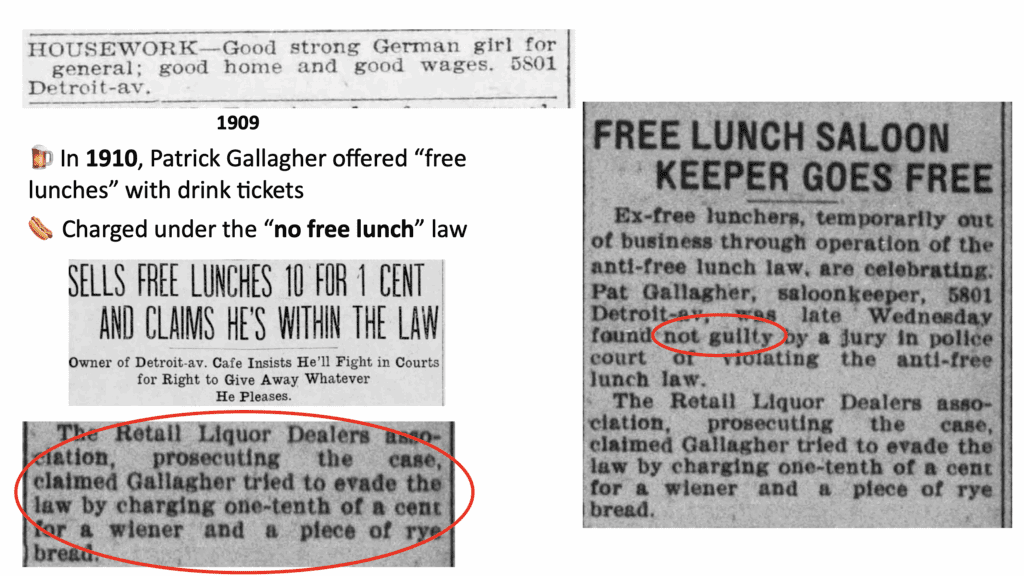
During Prohibition, the building disguised itself as a lunch counter and soda fountain—or at least, that’s what the sign said. Behind the scenes, Gallagher’s partner Paddy Joyce got busted when police discovered a massive liquor stash at his house. Another court case followed, and yet again, the ruling favored the barkeepers. The judge even ordered the booze returned.
Can you imagine Prohibition cops hauling barrels of liquor back to the guy’s house? Cleveland, you never disappoint.
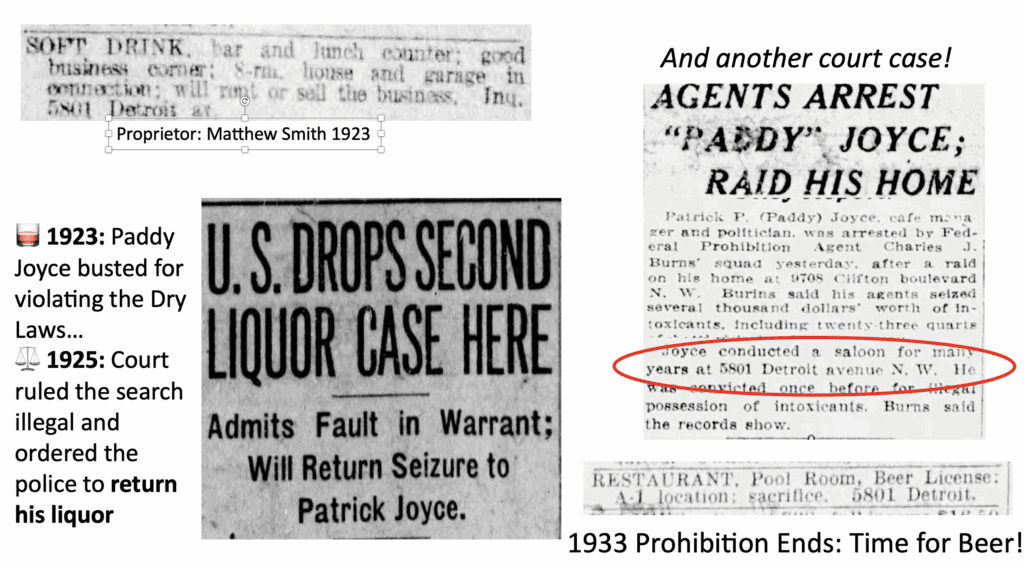
St. Paul’s Tavern, Fire, and a Stolen Furnace (1930s–1940s)
Once Prohibition ended, 5801 Detroit reopened as St. Paul’s Tavern, advertising “A1 location, liquor license, and pool table.” That party didn’t last long—a 1947 fire destroyed the building
.

Rebuilding the Tavern
Then came Anna and John Socotch, owners of the nearby Parkview Nite Club. They planned a major rebuild—investing $120,000 (a fortune back then) to resurrect the tavern. Before they could get started, thieves carted away a 500-pound furnace from the basement. Unfortunately, that wasn’t their only challenge. Churches and neighborhood groups opposed the project, sparking a 6 years-long legal battle that climbed all the way to the Ohio Supreme Court. The result? A loss—for now.
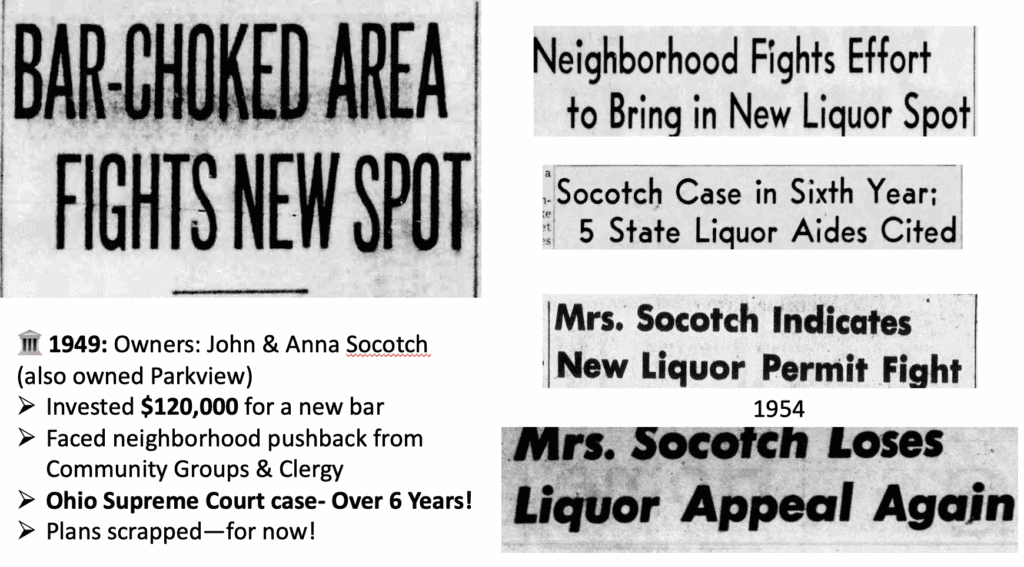
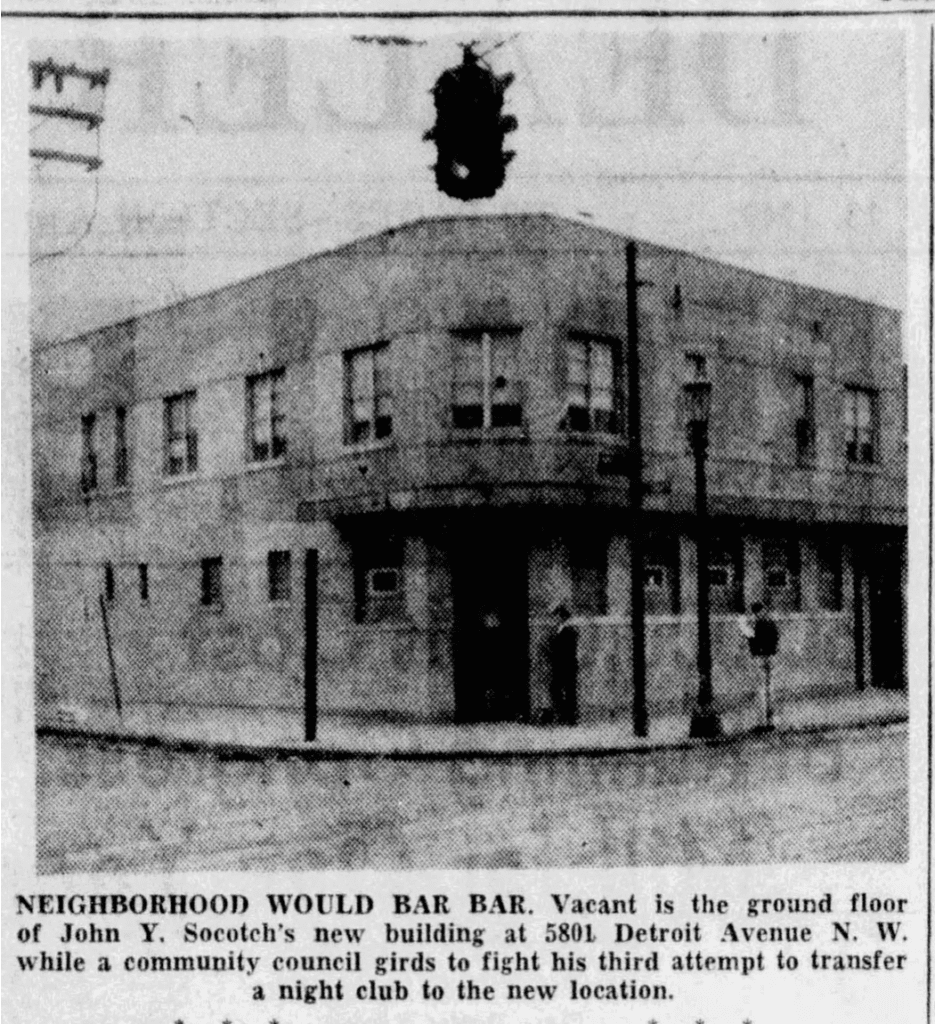
Yankee Bar: Snakes, Go-Go Girls & the Cleveland Way (1960s–1980s)
In 1960, Anna found a workaround. She partnered with East Side bar owner William Krause and transferred his liquor license. Finally, the tavern reopened—this time as the Yankee Bar (though for a while it was almost named after Cleveland’s own Frankie Yankovic, the Polka King).
The entertainment at the Yankee Bar was… unforgettable. Alongside go-go dancers and nightly acts, the bar became known for Queenie, a 350-pound bouncer who did snake dances with a cobra named Satan and a garden snake named Gore.
You read that right.
In 1966, more trouble slithered in. The bar was charged with sex discrimination over its “Ladies Night” policy—women got in free, men didn’t. That same year, Anna’s son was arrested for hiring a minor as a go-go dancer. He ended up serving time in the county workhouse.
Yet Anna kept at it. Into the 1980s, she was still battling City Hall—literally filing a lawsuit to block an Election Day initiative that would’ve made the ward dry.
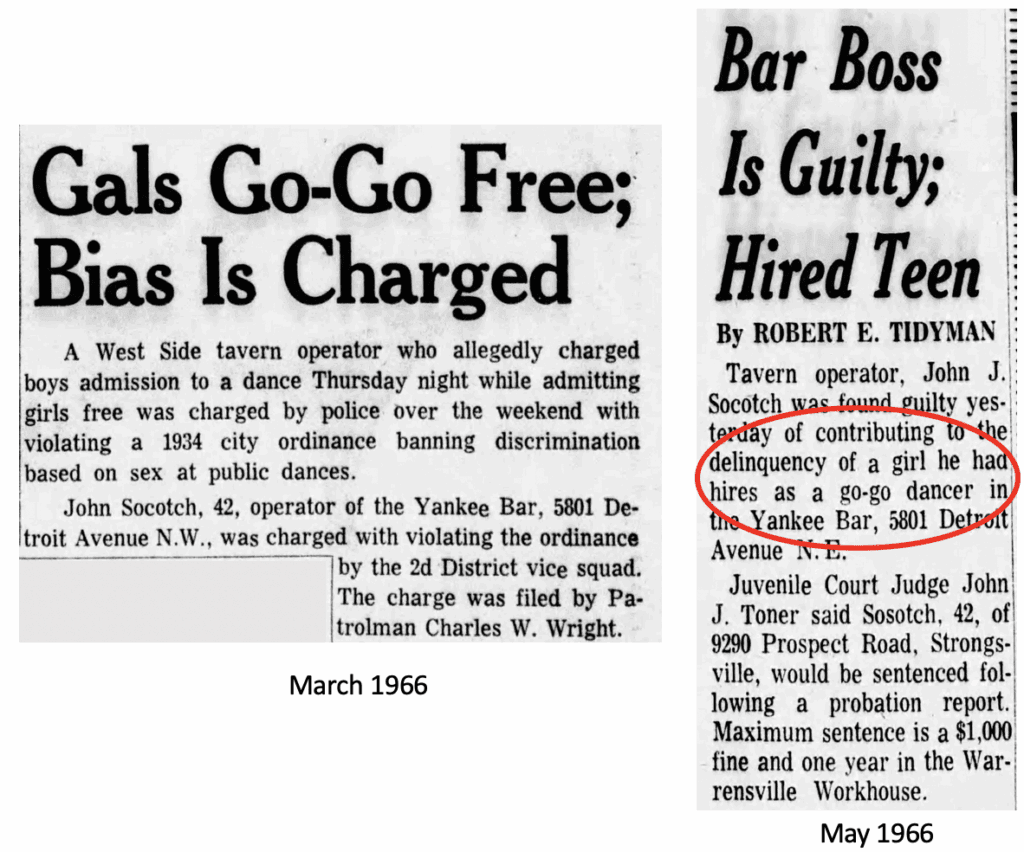
From Anna with Love
In 1985, Anna sold the bar to her son Virgil Socotch, and this part gets me every time—the deed says the property was transferred not for money or a gift, but with “love and affection.” I’ve reviewed thousands of deeds. I’ve never seen that before. And it says a lot about the kind of place this was.
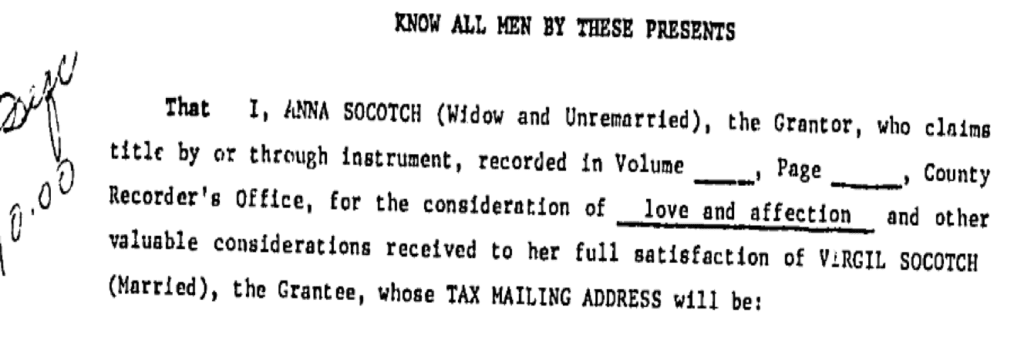
Anna passed in 1997 at age 93. The Socotch family sold the property the next year
Happy Dog Rises: From Jam Bands to Tater Tots (1990s–Today)
In the 1990s, Don Schurger purchased the building. At the time, Happy Dog was a dry bar (yes, really) with vegan food and jam bands, working with Cleveland Public Theater and relying on single-day liquor permits.
Eventually, with neighborhood support, a full liquor license was approved around 2005—and a new chapter began.
On August 1, 2008, Sean Kilbane and his team took over, and the Happy Dog we know today officially came to life.
It’s now a must-visit Cleveland destination known for:
- Gourmet hot dogs with wild toppings (Fruit Loops, SpaghettiOs—no joke)
- Tater tots for days
- A stage that hosts everything! City Club Forums to Punk Bands.
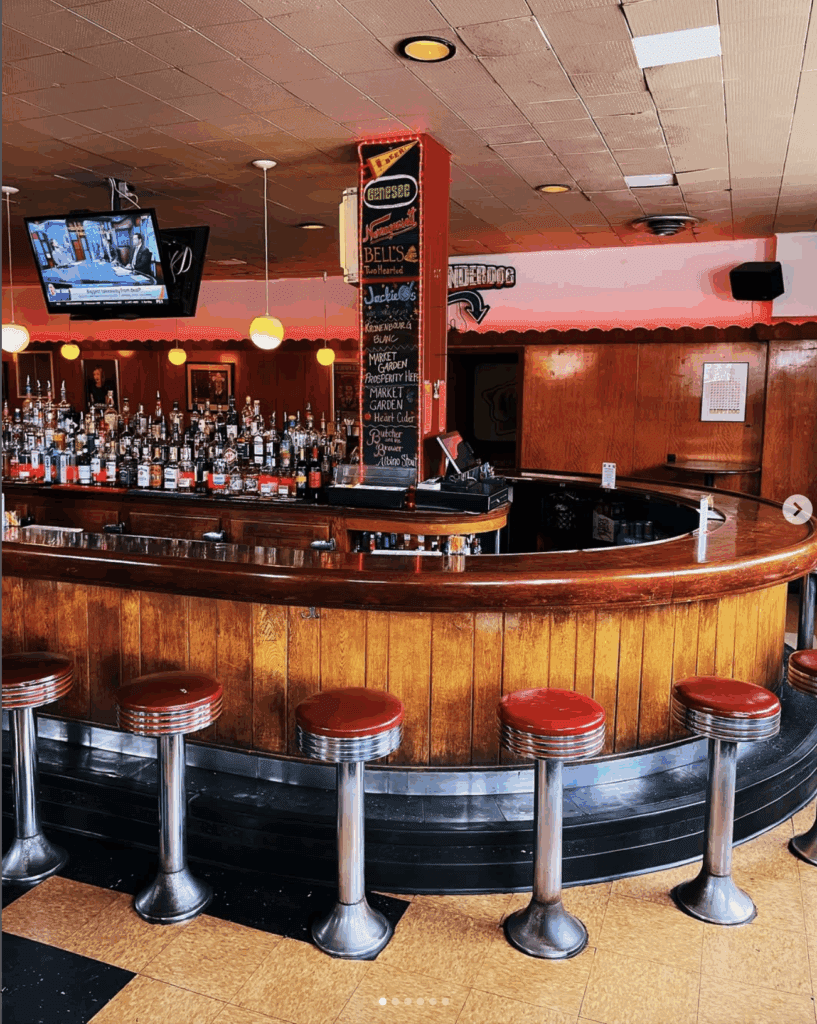
Final Dog Thought
So, next time you belly up to the bar or grab a seat near the stage, take a second to appreciate the ground beneath your feet. It’s seen fires, lawsuits, cobras, go-go dancers, and more hot dogs than you can count.
Happy Dog isn’t just a bar. It’s a Cleveland legend—served with tots on the side!
